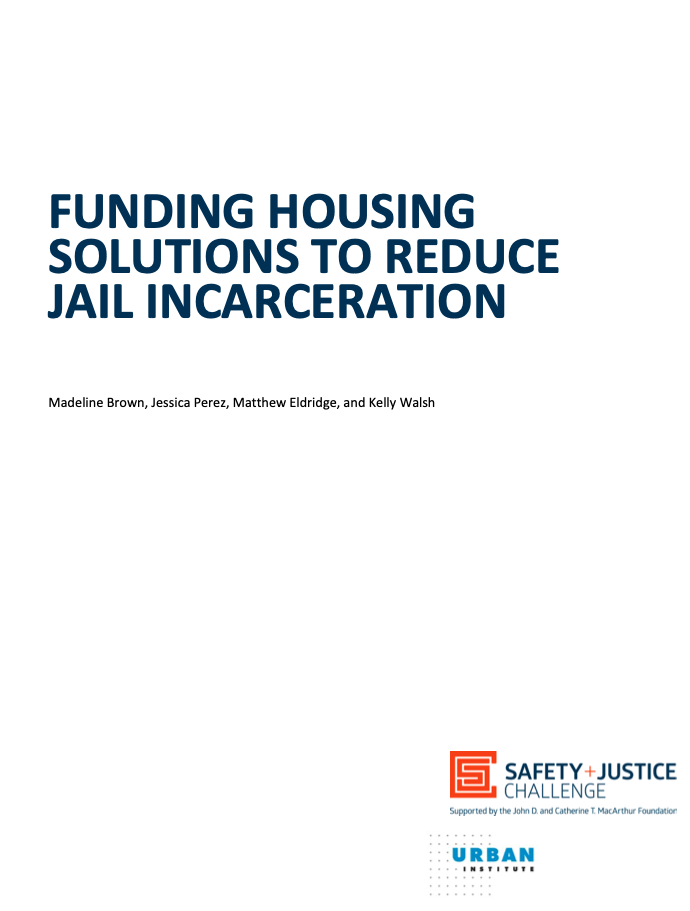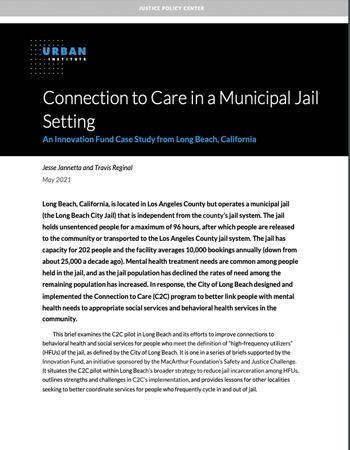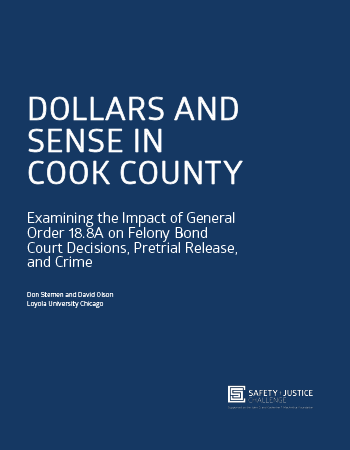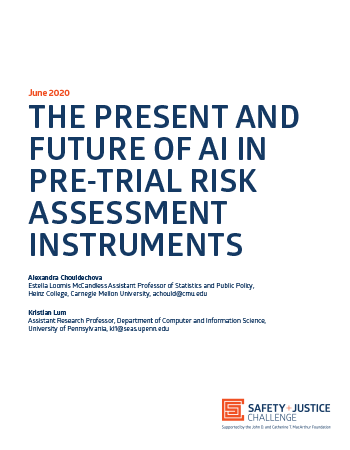Incarceration Trends Interagency Collaboration Jail Costs January 27, 2023
Perverse incentives drive government officials across the United States to stop, arrest, put through the court system, and even jail more people to generate revenue rather than to advance public safety. That is the focus of our recent report from the Brennan Center for Justice produced with support from the John D. and Catherine T. MacArthur Foundation’s Safety and Justice Challenge (SJC).
The report attempts to explain why decades-long efforts at decarceration, and broader criminal justice reform have run into such immense challenges focusing on a range of programs and practices often said to be aimed at public safety, but which are better understood through the lens of revenue production. The publication details how ending mass incarceration cannot happen until policymakers and the broader public understand and change the deeply entrenched economic and financial incentives that encourage punitive enforcement and imprisonment. Better understanding the extent of these interlocking incentives should make policymakers clearer eyed in making transformative policy changes.
Complex factors beyond simply increases to police forces and more punitive criminal penalties played a significant role in creating today’s bloated jail and prison populations. The report highlights some of the most corrosive and entrenched revenue generating practices—such as civil asset forfeiture, fines and fees, and privatized community supervision—where people subjected to criminal enforcement activities are routinely made to contribute to the very cost of their being arrested, detained, charged, prosecuted, supervised, or incarcerated. These economic and financial incentives established by local, state, and federal agencies are hiding in plain sight. The report details how police, prosecutors, and corrections agencies competed for these benefits by escalating their enforcement practices. Law enforcement came to depend on these funding sources, particularly as declining tax receipts and intergovernmental transfers left them grasping to fill budget holes. These incentives are a persistent structural driver of punitive enforcement and mass incarceration.
User-Funded Justice
Often so much time and effort go into generating revenue that the goals of pursuing justice and improving public safety get pushed to the side. The killing of Michael Brown in Ferguson, Missouri, drew national attention to this phenomenon because the city had pushed the police department and the courts to maximize funding potential of fines and fees. In fiscal years 2010 and 2011, about 12 percent of Ferguson’s general fund revenue came from fines and fees. By fiscal year 2015, the city was budgeting for 23 percent of its revenues to come from fines and fees.
Civil asset forfeiture has also turned into a major revenue source, going well beyond its onetime purpose of targeting drug kingpins. Law enforcement agencies seize and retain peoples’ cash, vehicles, homes, and other items on a suspicion of their connection to an offense without having to prove the connection. Minnesota’s Metro Gang Strike Force is a good example of this. An investigation revealed that its members were stopping and searching people who were clearly not involved in gang activity, and then taking or buying seized items for personal use — like televisions, tools, appliances and jet skis.
Correctional and Detention Bed Markets
Perverse incentives have also created a market in incarcerated people. Financially distressed counties have seen the market as a solution to their budget woes—often expanding their jails, or building jails that are bigger than they need, with the expectation of selling the extra bed space. As a result, a thriving market exists for beds in local jails and other detention facilities. In Louisiana, for example, Immigration and Customs Enforcement pays $74 a day to local sheriffs for its jail beds. That is nearly three times what the state prison system pays the same sheriffs to use its jail beds. In Midland County, Michigan, the local budget depends on renting jail beds at $45 a day to other counties. Bladen County, North Carolina, earned nearly $2 million in the first 18 months after it started holding people for the federal government in its local jails.
Enforcement-Oriented Performance Metrics.
Police departments and prosecutors’ offices reward staff for meeting productivity-based job metrics, such as arrest quotas and high conviction rates; they penalize people who fall short. With their job security and career advancement at stake, law enforcement officials are incentivized to pursue punitive measures even when leniency might be more appropriate.
Rebalancing the Scales of Justice
To unravel mass incarceration, and end it, reforms must account for and change the full array of these perverse financial incentives. Moreover, the justice system should be funded fairly and equitably by taxpayers, all of whom are served by it. It should not be funded primarily by the community’s poorest, most marginalized members. Based on that understanding, to end the crisis of punitive enforcement driven by pecuniary motives, policymakers need to identify and undo this self-reinforcing bundle of financial incentives that agencies have become all too reliant on to sustain or top of their budgets. Working together, they must change what is measured and rewarded to shift incentives. That is what will provide true public safety and restore community trust in the criminal justice system.






